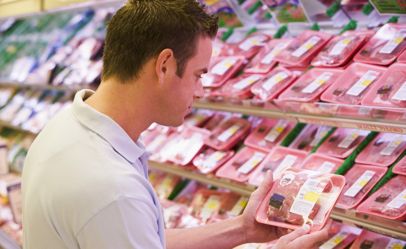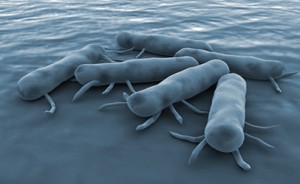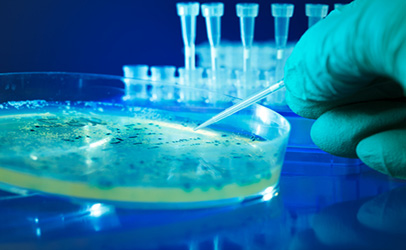 My previous articles have outlined that certain strains of Salmonella are virulent and pathogenic to humans. As such, they are adulterants by definition of the Meat and Poultry Inspection Acts, even in raw meat or
My previous articles have outlined that certain strains of Salmonella are virulent and pathogenic to humans. As such, they are adulterants by definition of the Meat and Poultry Inspection Acts, even in raw meat or
Continue Reading Controlling Pathogens: Options and a Recommendation

Carl Custer
Carl Custer is an independent consultant for food safety microbiology. He retired from USDA FSIS in 2007 after over 34 years as a bench and a desk scientist. The food safety issues he worked on include:
Inhibition of Clostridium botulinum,
Inhibiting nitrosamine formation,
Analysis and inactivation of Trichinella spiralis,
Physics and microbiology of cooling heated foods,
Thermal and non-thermal inactivation of bacterial pathogens in traditional and ethnic foods,
Predictive microbiology
The microbiology and safety of fermented and dry-cured meat products,
HACCP development and implementation for both processing and slaughter
---
These issues included developing the scientific basis for regulatory policy development and rule promulgation.
Carl also served as a trainer for FSIS inspectors, the FSIS Hotline, retail processors and inspectors, small farm processors, and country ham processors.
Carl is a lifetime member of the International Food Protection Association (IAFP) and the American Society for Microbiology. He was also a member of the Food Microbiology Research Conference executive board for twelve years and the Chair for two years.
Carl started his Food Microbiology career in 1966 as a technician then as graduate student for Dr. Carl Vanderzant at Texas A&M. Projects included dairy, meat, and seafood microbiology.
Carl’s hobbies included cooking, gardening, woodworking, and motorcycle touring on one of his four vintage Honda motorcycles.
Controlling Salmonella Would Cost Producers
 Controlling Salmonella or other pathogens would cost producers, and the cost would be expected to be transferred to processors and consumers. For animal pathogens, the USDA’s APHIS bears some of the burden and indemnifies producers…
Controlling Salmonella or other pathogens would cost producers, and the cost would be expected to be transferred to processors and consumers. For animal pathogens, the USDA’s APHIS bears some of the burden and indemnifies producers…
Continue Reading Controlling Salmonella Would Cost Producers
Controlling Salmonella in Raw Foods
 One of the arguments against attempts to control Salmonella is that it is naturally occurring and impossible to eradicate. According to several scientific studies, that is not true. During 1978-1981, B.S. Pomeroy at the University…
One of the arguments against attempts to control Salmonella is that it is naturally occurring and impossible to eradicate. According to several scientific studies, that is not true. During 1978-1981, B.S. Pomeroy at the University…
Continue Reading Controlling Salmonella in Raw Foods
Salmonellosis Prevention: The Warning Labels Are Enough
 Food Safety and Inspection Service (FSIS) labels are not always informative. The warning label prescribed in 9 C.F.R. 317.2(l) and 381.125(b) has faded into the background of consumer’s awareness by overuse. Other terms such as…
Food Safety and Inspection Service (FSIS) labels are not always informative. The warning label prescribed in 9 C.F.R. 317.2(l) and 381.125(b) has faded into the background of consumer’s awareness by overuse. Other terms such as…
Continue Reading Salmonellosis Prevention: The Warning Labels Are Enough
Salmonellosis Prevention: ‘Just Cook It’
 When Michael Taylor declared Escherichia coli O157:H7 an adulterant in ground beef, there were howls of, “Just cook it,” from the industry and from within FSIS. For example, two members of FSIS’ Microbiology Division were…
When Michael Taylor declared Escherichia coli O157:H7 an adulterant in ground beef, there were howls of, “Just cook it,” from the industry and from within FSIS. For example, two members of FSIS’ Microbiology Division were…
Continue Reading Salmonellosis Prevention: ‘Just Cook It’
Salmonella: The Bacterium
 The genus Salmonella is diverse. Currently there are three recognized species: S. enterica, S. bongori and S. subterranean, with S. enterica the most important specie affecting human and food animal health. However, even the species…
The genus Salmonella is diverse. Currently there are three recognized species: S. enterica, S. bongori and S. subterranean, with S. enterica the most important specie affecting human and food animal health. However, even the species…
Continue Reading Salmonella: The Bacterium
Salmonellosis: The Problem
 In 2013, the U.S. Centers for Disease Control and Prevention (CDC) reported that more than 500 people were sickened by seven strains of Salmonella Heidelberg linked to chicken. However, salmonellosis caused by Salmonella Heidelberg is…
In 2013, the U.S. Centers for Disease Control and Prevention (CDC) reported that more than 500 people were sickened by seven strains of Salmonella Heidelberg linked to chicken. However, salmonellosis caused by Salmonella Heidelberg is…
Continue Reading Salmonellosis: The Problem
